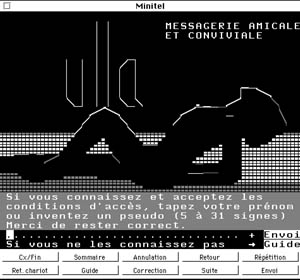


3615 Ulla was a Minitel microserver for dating and chatting, part of the so-called pink Minitel. It was one of the most popular Minitel services.
(post updated 2024)



3615 Ulla was a Minitel microserver for dating and chatting, part of the so-called pink Minitel. It was one of the most popular Minitel services.
(post updated 2024)
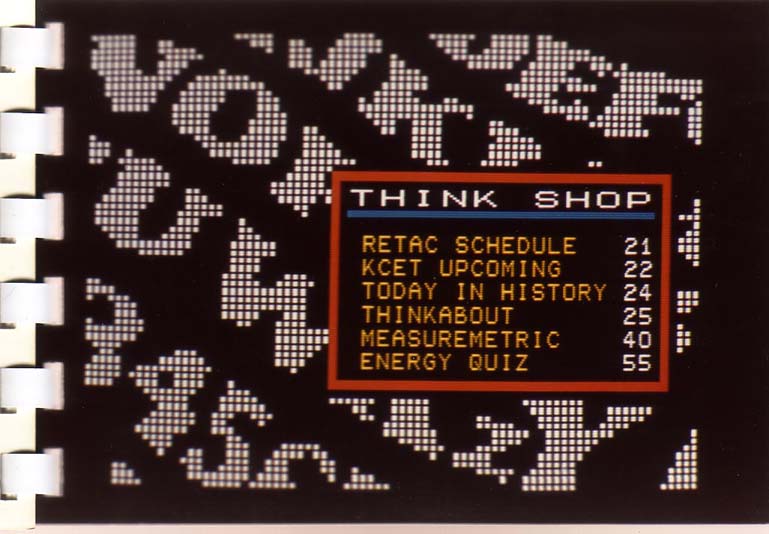
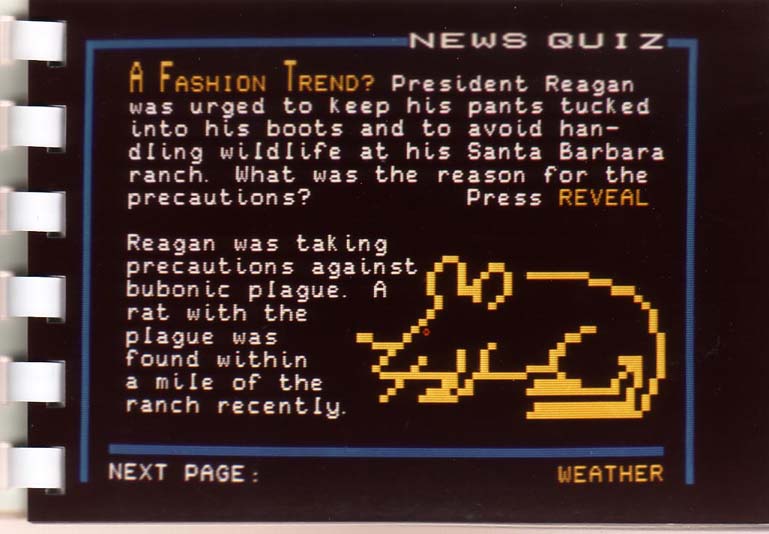
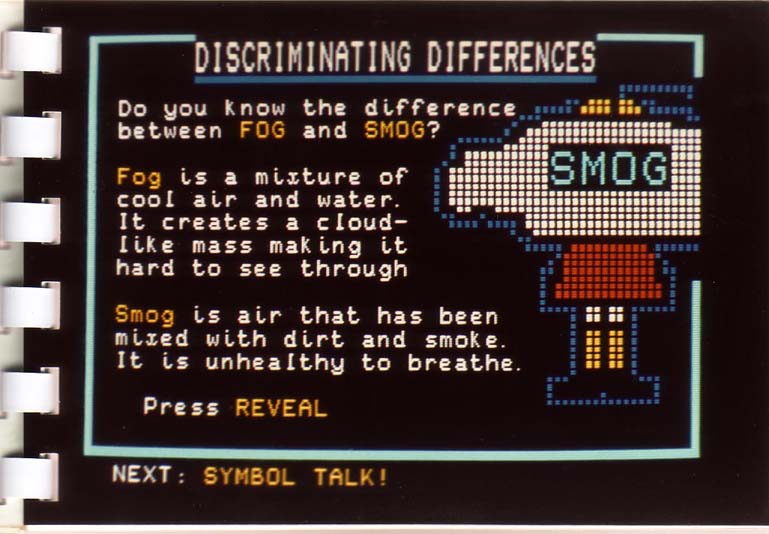
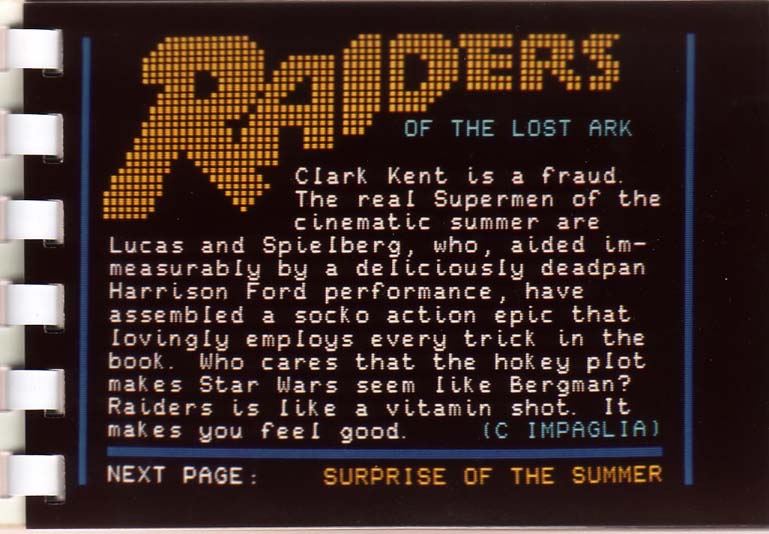

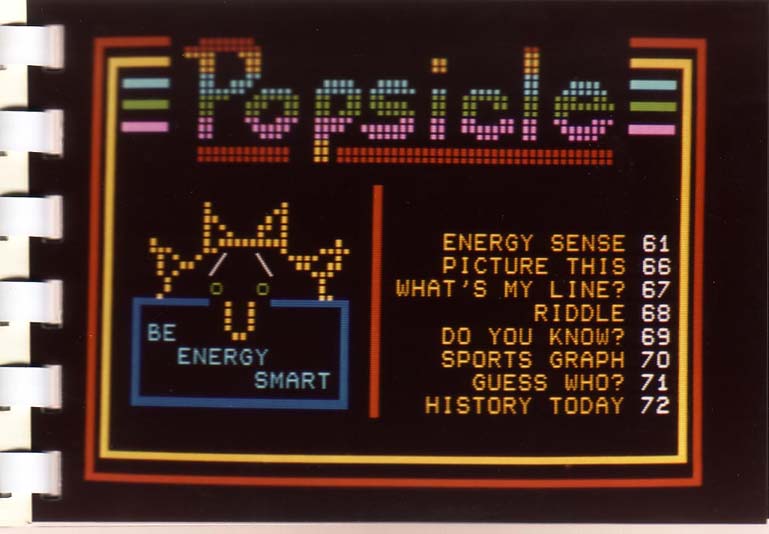
Teletext graphics by Richard Gingras, 1980. This service was called Now and ran on KCET-TV. It was part of a collaboration between CBS, NBC and PBS to test the French Antiope standard for teletext. The project was supported by Télédiffusion de France.
Images from Gingras’ website, which is only partly archived on archive.org. There’s an interview with Gingras about his teletext work here.
Post updated 2024.
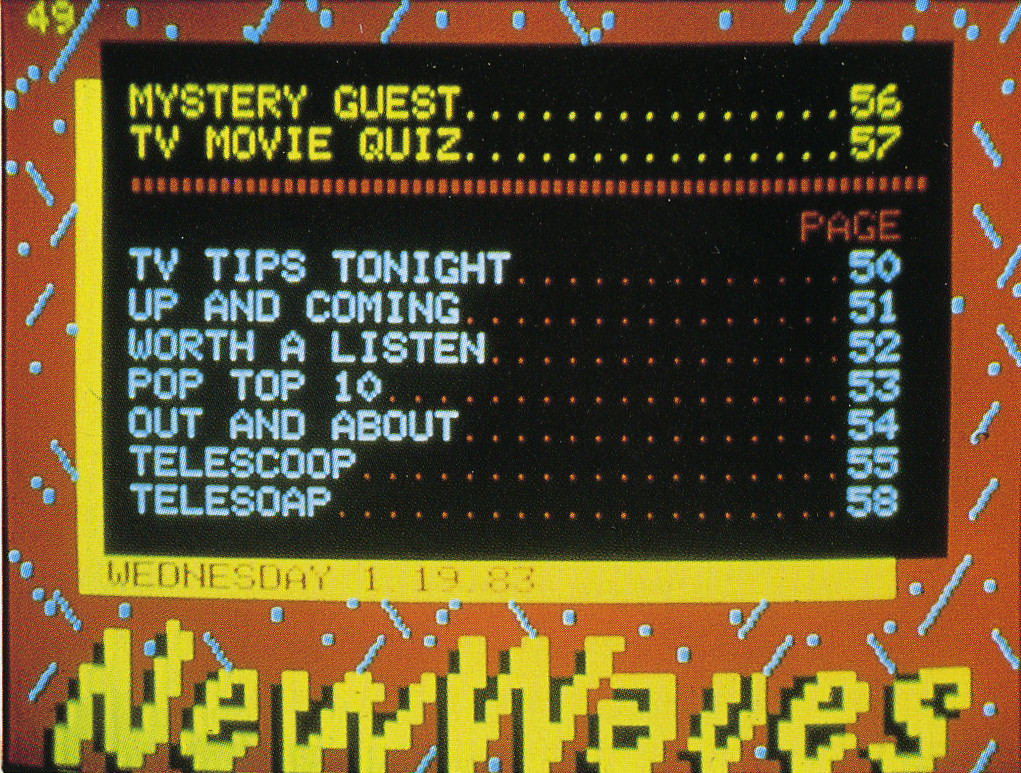
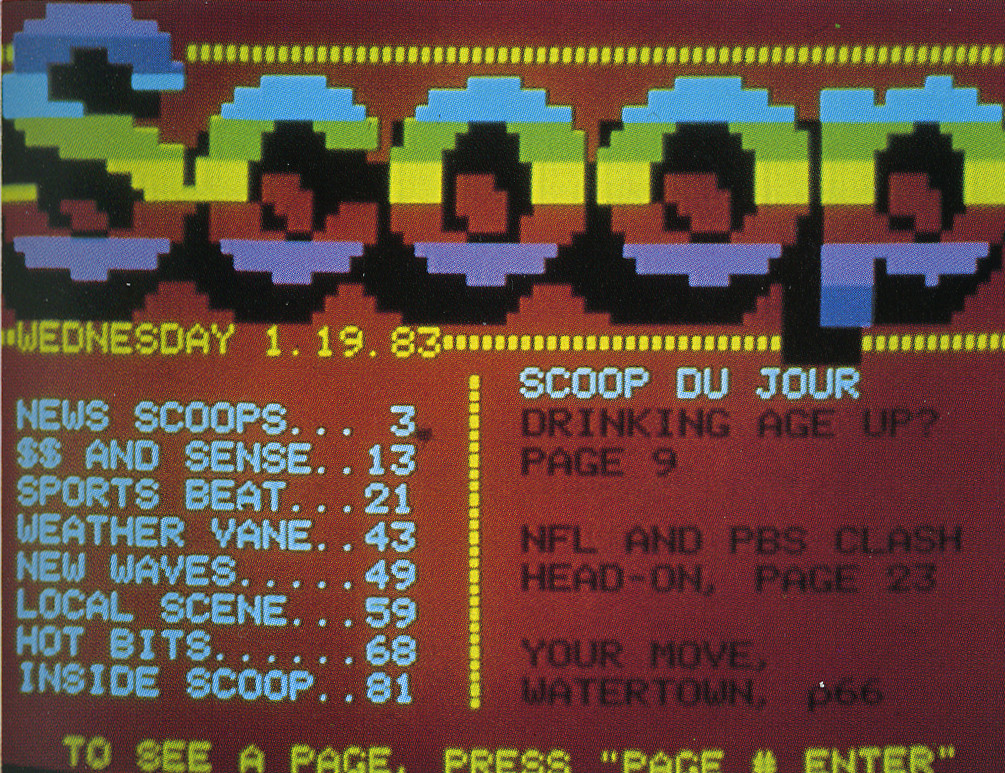
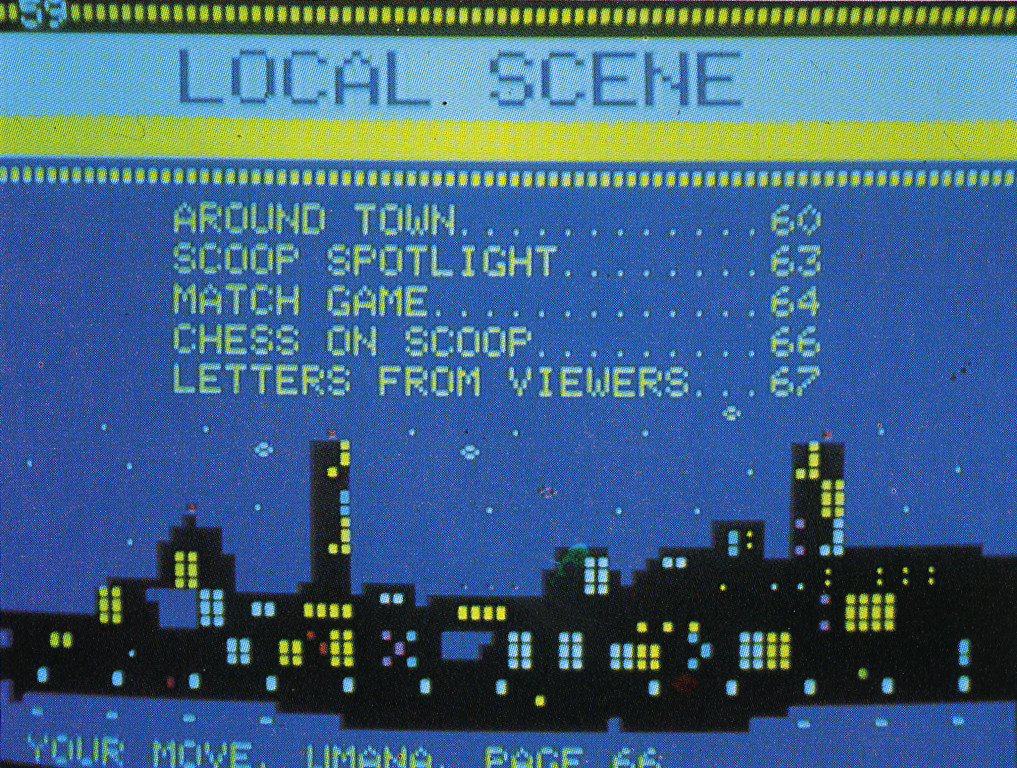
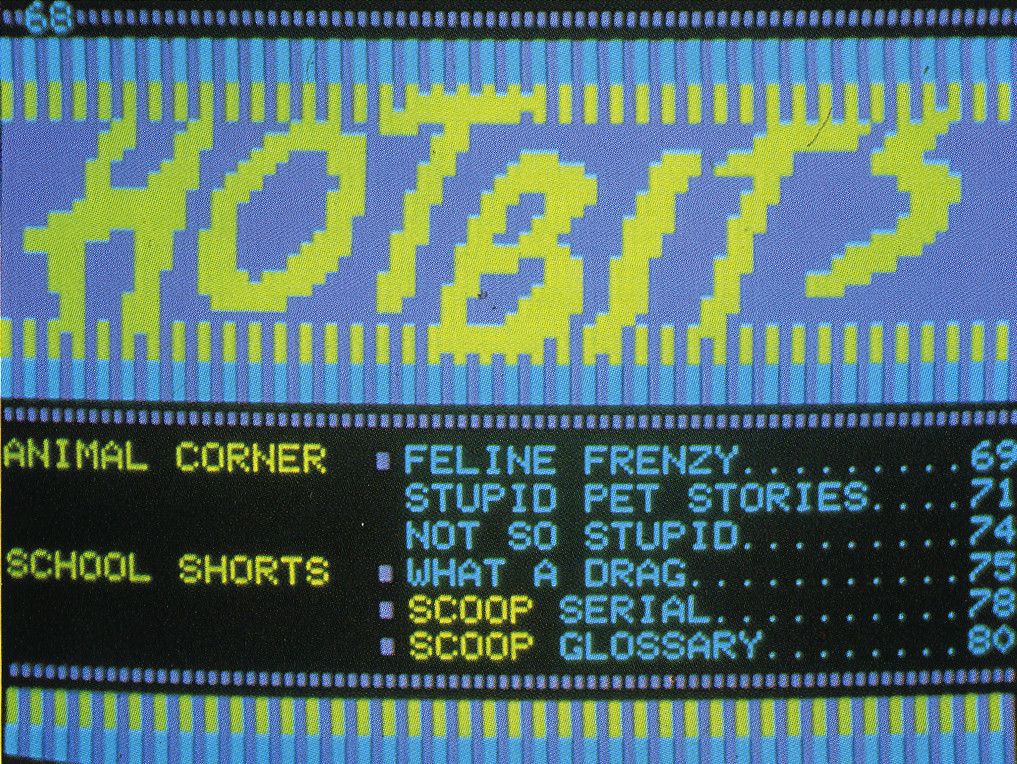
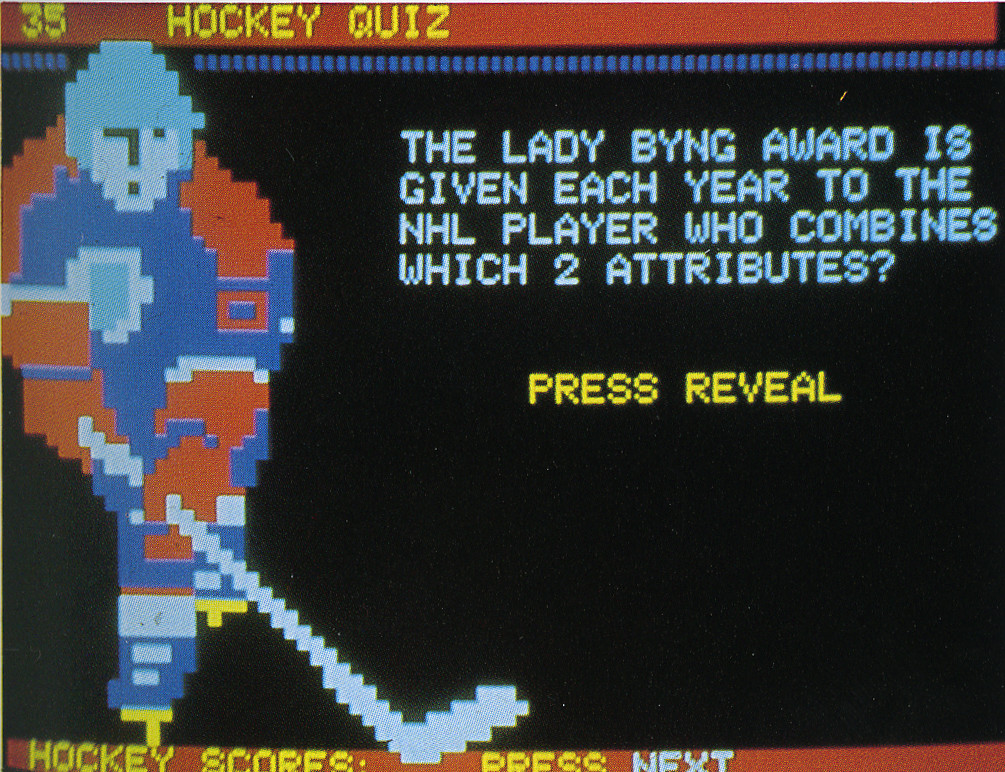
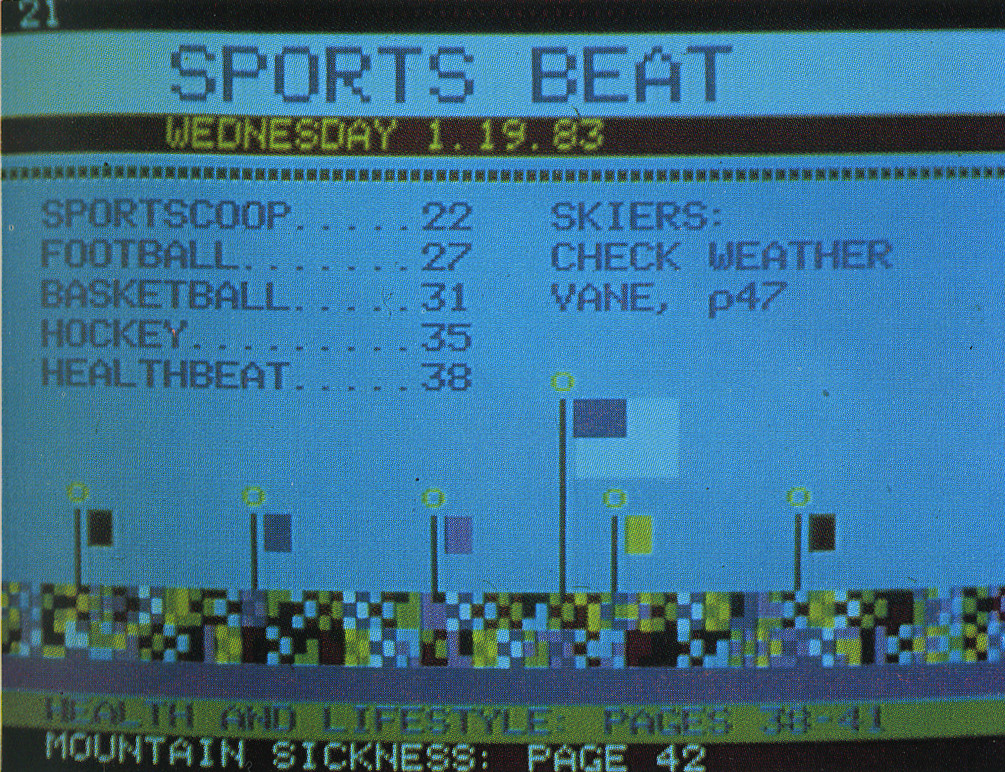
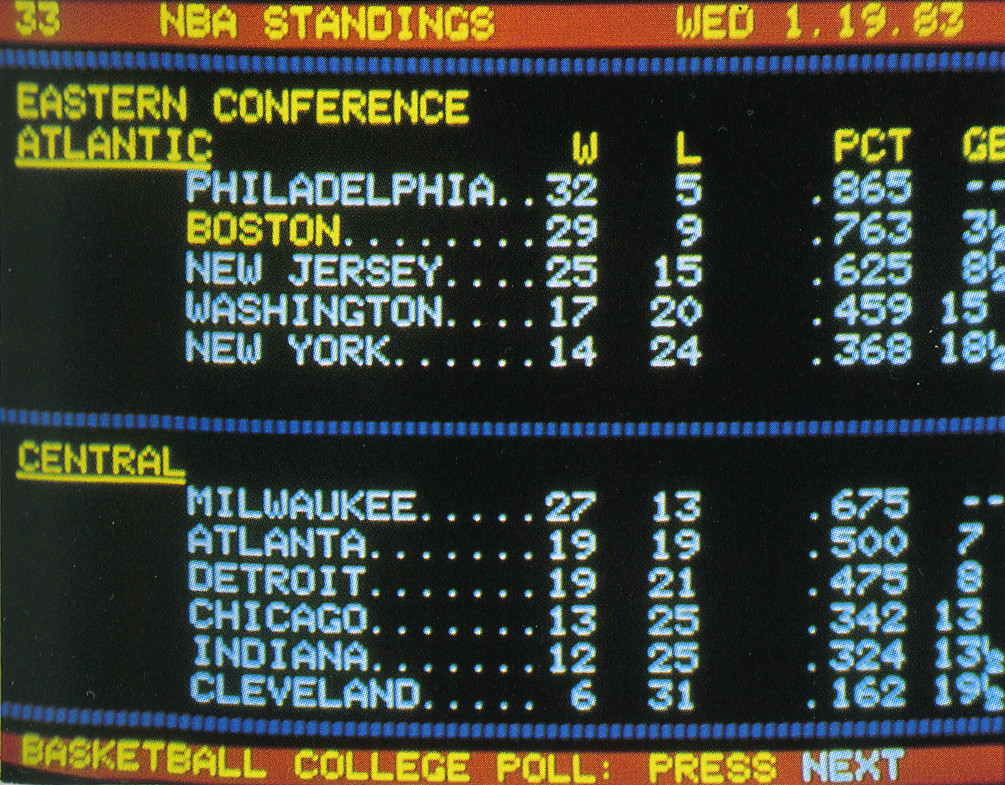
SCOOP was a teletext magazine for teenagers, available at ten high schools in USA, 1985. It was broadcasted on WGBH-TV in Boston using the NABTS/NAPLPS standards, which included the alpha-mosaic features of the French Antiope standard (see page 12).
“The kind of information presented (topical subjects, sports scores, around town information, etc.), the way it was presented (short, tightly edited segments), and the format (contemporary, graphic-heavy, easy to access) were appropriate to a teenage audience.”
More info in Formative Evaluation for Educational Technologies. Post updated in 2024.
Antiope (1976/1979) was the French competitor to the British teletext standard. Antiope used a higher data rate, dynamic page sizes, custom fonts, and generally more sophisticated graphics, although some of these features were introduced later in the 1980s.
According to the French, it was not as “crude and old fashioned” as British teletext. Nevertheless, the British won the the standardization war and proclaimed World System Teletext, while Antipoe was used for Teletel (better known as Minitel).
Some images from here.
Post updated in 2024.
Reabracadabra by Eduardo Kac, 1985. Visual poem made for the Brazilian videotex service Videotexto, which was based on Minitel. I wrote about this work for Rhizome’s Net Art Anthology.
A mobile phone version was made in 2003. Post updated in 2024.